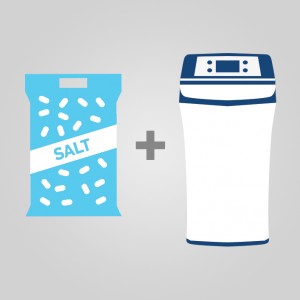 Salt is essential to the water softening process, so it’s important to know when to add more to the system. The type of water softener, size of the brine tank, water hardness and household water usage all determine how much salt you need and how often you’ll need to replenish your softener’s salt supply. But with a few tips, you can make sure you’re adding the right amount to keep your system running smoothly.
Salt is essential to the water softening process, so it’s important to know when to add more to the system. The type of water softener, size of the brine tank, water hardness and household water usage all determine how much salt you need and how often you’ll need to replenish your softener’s salt supply. But with a few tips, you can make sure you’re adding the right amount to keep your system running smoothly.
Check inside the tank
Determine your salt level by lifting the cover of the brine tank and taking a peek inside. If the salt looks dry and the tank is less than half full, refill until it’s just over half full. Also, if the salt looks wet or the water level is above the salt, it’s time to fill the tank about half full.
Consider your softener’s age
The age of your water softener has a big impact on salt usage. If your softener is more than 10 years old, it may use more salt than a newer, more efficient system. Newer models also operate on a demand-initiated cycle and regenerate only when you need them to versus on a set schedule. The latest systems also have low salt indicators or even a remote monitoring alert to let you know you are running low on salt and help make water softener maintenance easy. Overall, because newer models are more efficient with salt use, they typically only need to have salt added every 6-8 weeks. However, it’s always a good idea to check regularly to make sure everything is working the way it should.
Avoid bridging
To ensure your softener is getting the salt it needs, inspect it every two to three months to make sure a salt bridge hasn’t formed You might suspect a salt bridge when the salt level in your tank does not appear to go down after months of use or when you notice you don’t have soft water. To avoid this issue, have your softener installed in a low humidity area when possible, use a high-quality salt and keep your brine tank no more than half-full with salt.
Wondering which type of salt is best for your softener? Consult your owner’s manual or learn more about the pros and cons of your various salt options.

